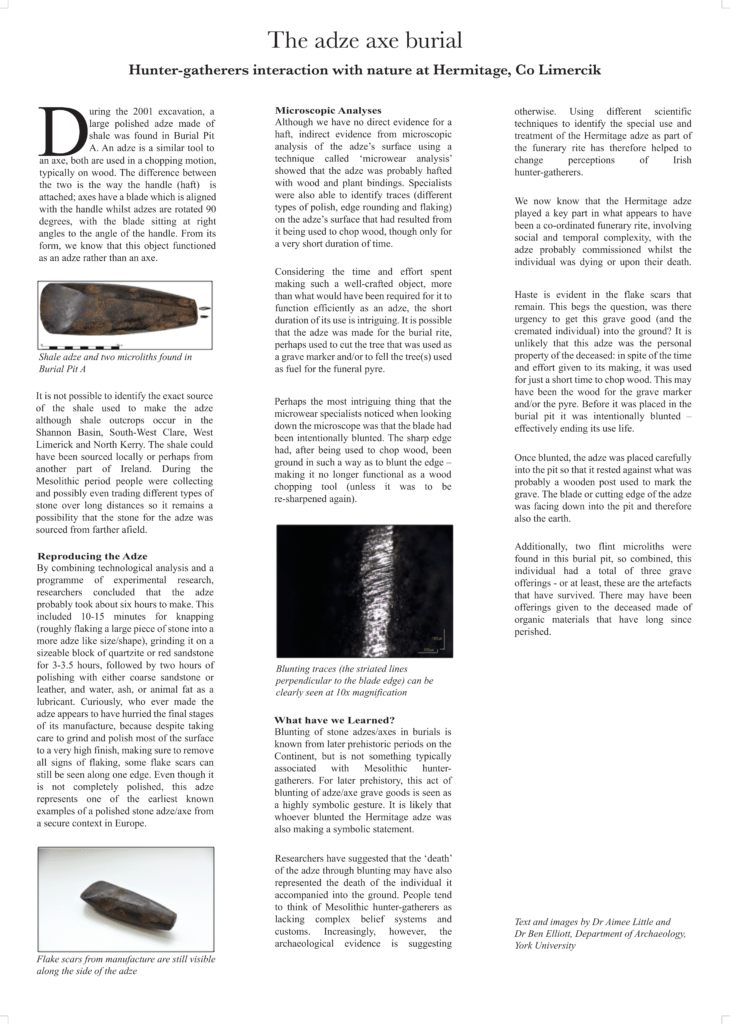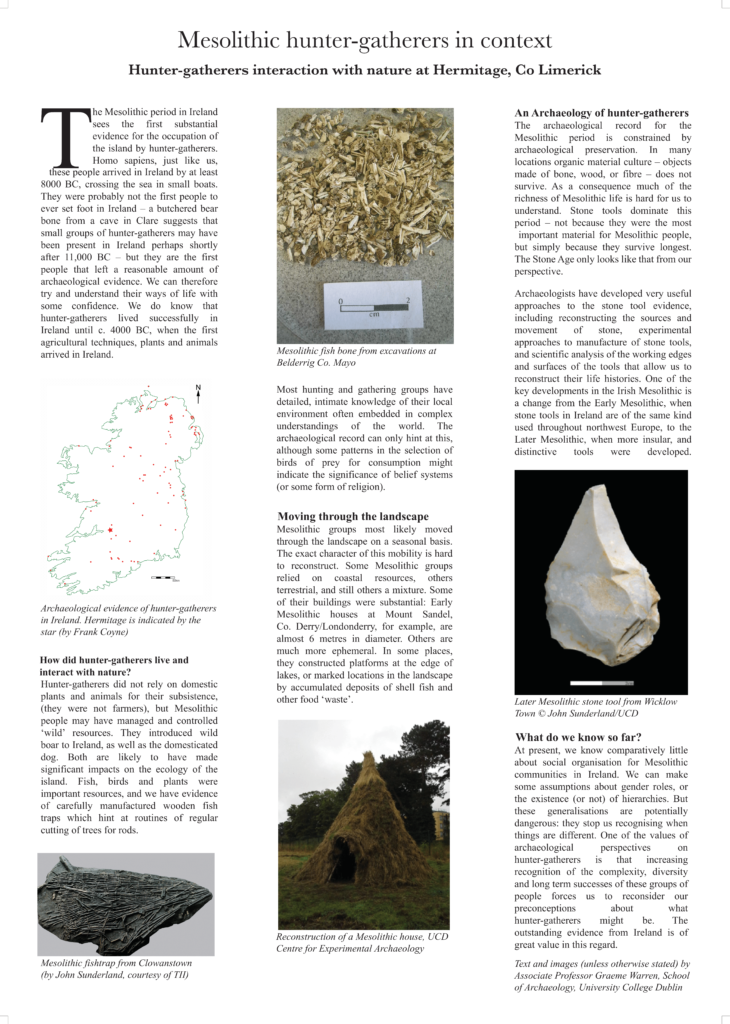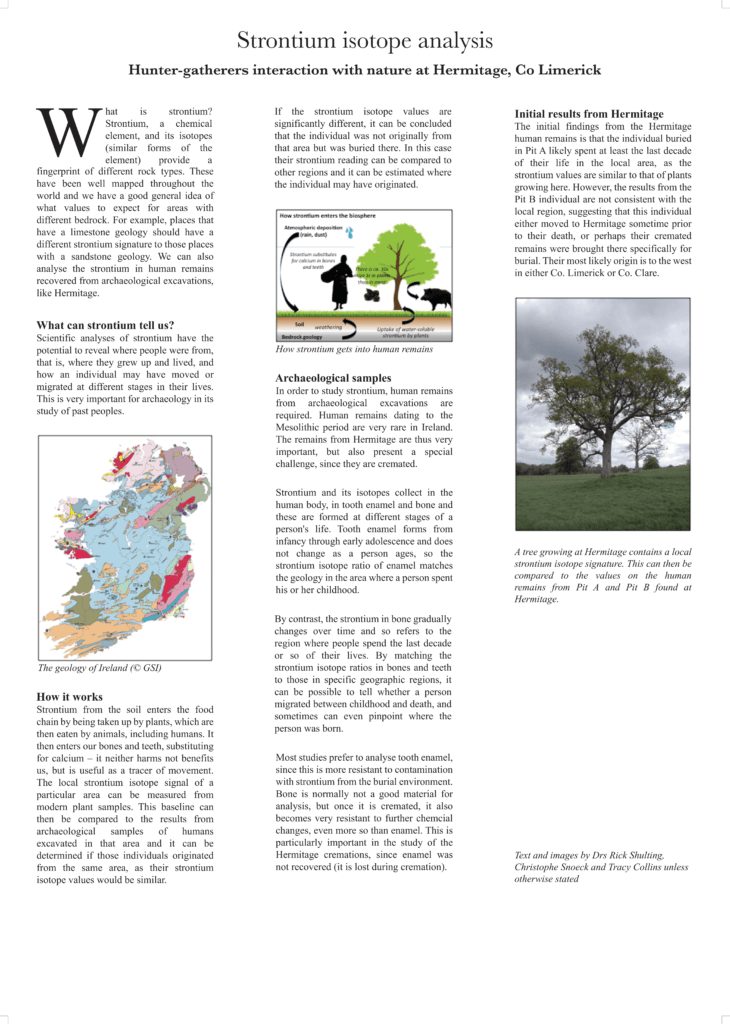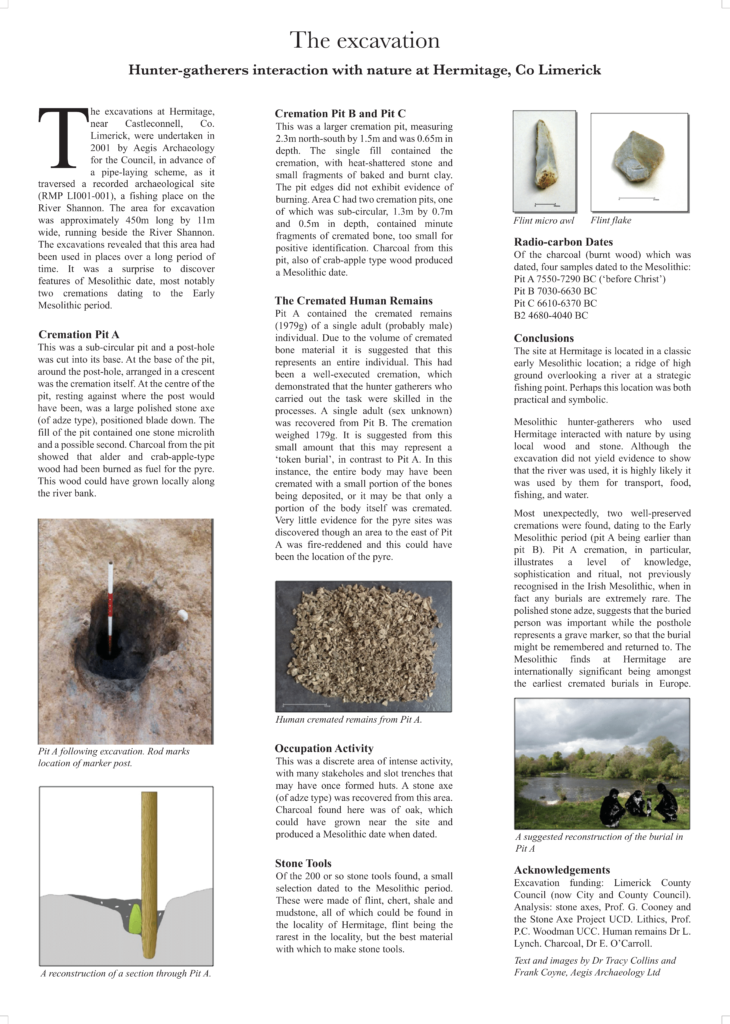This Story is:
The earliest recorded inhabitants of Ireland date back to the Mesolithic period, arriving by at least 8000BC and crossing the sea in small boats.
In 2001, Ireland’s oldest recorded burial site was discovered at Hermitage, Castleconnell. Following test trenching by Limerick County Council in advance of a pipe-laying scheme, Aegis Archaeology was contracted to excavate the site over a four-week period.
The area for excavation was approximately 4400sq.m., running beside the River Shannon and it revealed that this area had been used in places over a long period of time, giving a rare glimpse of how hunter-gatherers used natural materials from their locality.
Aegis Archaeology tell us that “it was a surprise to discover features of Mesolithic date, most notably two cremations dating to the Early Mesolithic period”. Further discoveries included human cremated remains, charcoal, a polished stone axe (of adze type) and number of stone tools, all of which dated to the Mesolithic period.
“Conclusions
The site at Hermitage is located in a classic early Mesolithic location; a ridge of high ground overlooking a river at a strategic fishing point and perhaps this location was both practical and symbolic.
Mesolithic hunter-gatherers who used Hermitage interacted with nature by using local wood and stone. Although the excavation did not yield evidence to show that the river was used, it is highly likely it was used by them for transport, food, fishing, and water.
Most unexpectedly, two well-preserved cremations were found, dating to the Early Mesolithic period (pit A being earlier than pit B). Pit A cremation, in particular, illustrates a level of knowledge, sophistication and ritual, not previously recognised in the Irish Mesolithic, when in fact any burials are extremely rare.
The polished stone axe, suggests that the buried person was important and of high status while the posthole perhaps represents a grave marker, so that the burial might be remembered and returned to. The Mesolithic finds at Hermitage are internationally significant being amongst the earliest cremated burials in Europe.”





